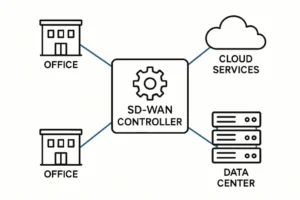Equipment failures don’t wait for convenient moments. They strike during peak production, disrupt critical operations, and drain budgets faster than you can say “emergency repair.” Traditional maintenance approaches are buckling under pressure from aging infrastructure and rising operational costs.
Companies that utilize predictive maintenance report a 5–15% reduction in facility downtime, a 5–20% increase in labor productivity, and a 3–5% decrease in new equipment costs. Smart organizations aren’t just keeping up, they’re revolutionizing how they maintain their assets.
Understanding Modern Maintenance Frameworks
Modern maintenance has moved far beyond the scheduled maintenance definition, which describes performing routine tasks at set, predetermined intervals. Today’s maintenance strategies blend condition-based monitoring with advanced analytics to create smarter, more responsive systems.
Beyond Time-Based Approaches
Organizations are discovering that rigid scheduling often leads to unnecessary work or missed failures. Equipment doesn’t wear out on a calendar, it responds to operating conditions, usage patterns, and environmental factors. Smart maintenance teams now use real-time data to determine when intervention is actually needed.
Modern frameworks integrate seamlessly with sophisticated work order management system platforms. Integrating a robust work order management system allows organizations to track asset performance, manage maintenance schedules, and provide visibility across entire operations, essentially becoming the backbone of data-driven maintenance strategies.
Technology Integration Strategies
The convergence of multiple technologies creates powerful maintenance ecosystems. Edge computing processes sensor data locally, reducing response times and bandwidth requirements. Cloud platforms provide the computational power needed for complex analytics while ensuring data accessibility across multiple locations.
This technological foundation supports everything from simple alerting systems to complex AI in maintenance applications that can predict failures weeks in advance.
The Predictive Maintenance Revolution
AI in maintenance is transforming how organizations approach asset care. Machine learning algorithms analyze patterns in equipment behavior, identifying subtle changes that indicate developing problems.
Machine Learning Applications
Neural networks excel at recognizing complex patterns in vibration data, temperature readings, and acoustic signatures. Computer vision systems can spot visual anomalies that human inspectors might miss, from hairline cracks to unusual wear patterns.
Natural language processing helps maintenance teams extract insights from historical work orders and technician notes. This wealth of unstructured data becomes actionable intelligence when properly analyzed.
Advanced Analytics in Action
Digital twin technology creates virtual replicas of physical assets, allowing teams to simulate different scenarios and test maintenance strategies without risking real equipment. Reinforcement learning algorithms continuously optimize maintenance schedules based on actual outcomes.
These advanced applications turn maintenance from reactive firefighting into strategic asset management.
IoT’s Role in Smart Infrastructure
The Internet of Things (IoT) has become the nervous system of modern maintenance strategies, creating a web of connectivity between assets, sensors, and analytics platforms. Instead of relying solely on technician inspections or fixed service intervals, IoT-enabled devices continuously stream performance data from machines in real time. This creates a living picture of asset health that evolves with every hour of operation.
For organizations managing thousands of machines or distributed infrastructure, IoT transforms maintenance from a reactive chore into a proactive, intelligence-driven process.
Sensor Network Deployment
Modern IoT deployments go far beyond installing a few temperature gauges. Industrial-grade sensors can measure vibration, pressure, fluid levels, voltage, corrosion, and even environmental conditions like humidity and air quality. These devices are smaller, more affordable, and more durable than ever before, making large-scale adoption feasible across sectors.
Wireless mesh networks allow hundreds or even thousands of sensors to communicate seamlessly without the need for expensive cabling, while energy-harvesting sensors draw power from vibrations, heat, or light, reducing maintenance costs associated with battery replacement.
In industries with harsh operating conditions like oil & gas rigs, mining sites, or chemical plants, ruggedized sensors can withstand extreme temperatures, corrosive environments, and constant vibration. With 5G connectivity, these sensors can transmit high-volume data streams in real time, enabling near-instant alerts when equipment veers outside safe operating thresholds.
Real-Time Processing Capabilities
Capturing data is only the first step. Processing that information at the right time and place determines whether organizations gain a competitive edge. Edge computing plays a critical role here by analyzing sensor inputs locally, directly at the machine or facility level. This ensures data is monitored before only the most relevant insights are sent to the cloud. This allows for faster response times in critical environments where delays could mean costly failures or safety risks.
Hybrid cloud-edge architectures combine the strengths of both approaches: edge nodes provide immediate decision-making capability for frontline equipment, while cloud platforms aggregate global data for advanced analytics, predictive modeling, and long-term optimization. This balance ensures that plants remain resilient even during network outages, since critical functions continue operating independently at the edge.
Transformative Impact on Maintenance
When IoT is fully integrated into maintenance strategies, organizations no longer rely on guesswork. Instead, they receive continuous updates on asset health, with predictive models flagging potential failures weeks or even months before they occur. For example, a power utility can track transformer temperature and oil quality across an entire grid, pinpointing which units need servicing long before they fail.
Transportation fleets can monitor tire pressure, engine health, and brake performance in real time, dramatically reducing roadside breakdowns. The result is a system where maintenance teams are always one step ahead—shifting from reactive firefighting to planned, precision-driven interventions. This extends the lifespan of assets and also reduces emergency repair costs, improves workplace safety, and enhances regulatory compliance through detailed, automatically logged performance histories.
Future Technology Trends
The maintenance landscape continues evolving at breakneck speed. Quantum computing promises to solve optimization problems that are currently intractable. Autonomous maintenance systems could eventually operate with minimal human intervention.
Technician training and complex repairs are being transformed by immersive technologies. Augmented reality headsets can overlay digital instructions directly onto a machine, guiding workers step by step through maintenance tasks. This reduces training time, minimizes errors, and empowers less-experienced technicians to perform advanced repairs with confidence.
In high-stakes environments such as aviation maintenance or hospital equipment servicing, AR can ensure accuracy while reducing reliance on scarce expert resources. Virtual reality simulations also allow organizations to train teams on rare but critical failure scenarios without risking real assets.
As maintenance becomes more data-driven, ensuring the accuracy, security, and traceability of maintenance records is paramount. Blockchain technology provides an immutable ledger of maintenance activities, making it impossible to alter or falsify records. This is particularly valuable in industries with strict compliance requirements, such as pharmaceuticals, aviation, and nuclear energy.
For instance, an airline could use blockchain to guarantee that every engine inspection is accurately documented and verifiable, providing regulators and passengers with greater trust in safety standards.
The Smart Maintenance Advantage
Modern maintenance technologies aren’t just improving operations—they’re redefining what’s possible. Organizations that embrace scheduled maintenance enhanced by AI and IoT gain competitive advantages through reduced downtime, lower costs, and improved reliability. The question isn’t whether to adopt these technologies, but how quickly you can implement them. Companies that wait risk falling behind competitors who are already reaping the benefits of smarter, more efficient maintenance strategies.
Common Questions About Advanced Maintenance
What’s the difference between predictive and scheduled maintenance?
Scheduled maintenance follows fixed time intervals, while predictive maintenance uses real-time data to determine optimal timing based on actual equipment condition.
Can small businesses implement these technologies affordably?
Yes, cloud-based solutions and Maintenance-as-a-Service offerings make advanced maintenance tools accessible without large upfront investments.
How long before organizations see results?
Most companies report measurable improvements within 6-12 months, with full benefits typically realized within two years of implementation.
Also Read-Data Science Innovations Transforming the Fintech Landscape








